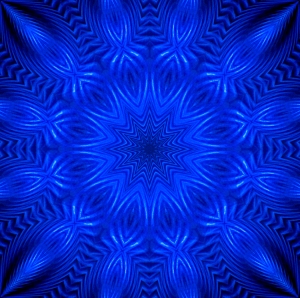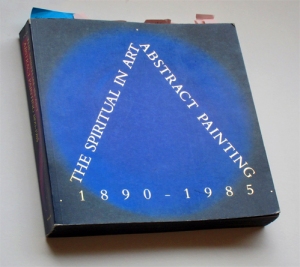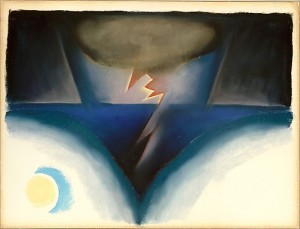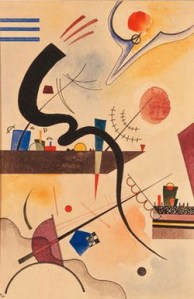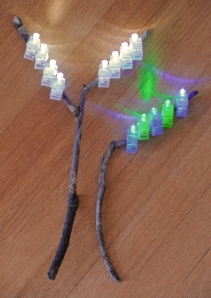Terry Long imagery
The digital art portfolio of Terry Long. All images and articles by Terry Long are subject to copyright
Aerial Dance No.7
Aerial Dance No.7 / 2013 / Terry Long
This is an action painting produced with several LED lights interwoven in the air during a 12 second exposure. The camera was a digital Nikon D700, with a Tokina SD 17-35 F4 (IF) FX Lense. There was also some post production work, and while doing this, I remembered a painting I had seen during my student days at art college in London that caught my attention.
The Battle of Britain / 1941 / Paul Nash
Paul Nash was, and still is one of my favourite English painters who had been an official wartime artist for Great Britain during the second world war. The above painting by Nash depicts an aerial battle with vapor trails from the fighter planes intertwining. Even though the pilots in this scene fight for their lives and countries, they create this surreal aerial dance which relates very much to the trailing of light in my painting.
You can find more information about Paul Nash here… http://www.tate.org.uk/art/artists/paul-nash-1690
and here… http://www.rennart.co.uk/nash.html
Art with Light

Light Show by P. Ball, C. Lauson & A. Wagner / Hayward Publishing / 2013
Up until last weekend, I thought Hennessey & Ingalls was the only good art book store in Los Angeles, until I walked into Arcana, located in the historic Helms Bakery shopping area. This is not like any other book store I have ever visited, and I immediately felt like I was in a place of religious worship, or in some prestigious art gallery. The books in Arcana are treated with the upmost reverence, with knowledgable staff to help you find exactly what you are looking for, which is how I discovered the above book. If your into drawing and painting with light, like me, this book, Light Show, by P Ball, C Lauson, and A Wagner is an absolute must. This book was written and published to accompany the Light Show exhibition at the Hayward Gallery, London, 30th Jan – 28th April, 2013. Sadly, I missed the show, but now I have this wonderful book that features 22 artists who work with light. Also last weekend, I purchased my latest LED hand held light, which I used to light the book for my photograph above. The title on the book cover had been laser cut, so I opened the front of the book, so I could direct the beam through the cover onto the floor, giving a spot light effect.
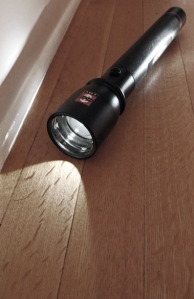
Coast HP17 variable beam LED light
The Coast HP17 is a high powered LED hand held light. A single button type switch allows you to select between a high output setting of 615 lumens, or a low output of 64 lumens. By sliding the front casing of the lamp, you can change the beam from spot to flood. You can also lock the beam focus in any position you want. The bulls eye spot beam pattern gives you a focused spot with a maximum beam distance of 269 meters (882 feet), while producing an outer ring of flood light. I hope to use this light for outdoor photography, such as light painting a tree, or a section of a building.
Here is a link to Arcana Books in LA… http://www.arcanabooks.com/ and here is a link to more info on the LED light… http://www.coastportland.com/hp17-led-flashlight.htm
Amazing Mandalas
 Sea Mandala / Yoji Ookata
Sea Mandala / Yoji Ookata
This mandala design was photographed 80 feet below the ocean near Japan. Similar designs made in the fine sandy ocean bed have been seen before, but no one has known who, or what has produced them. Could it be deep diving Buddhist monks, or underwater aliens? It’s a fishy story, and a story of love that was discovered by Yoji Ookata, a Japanese diver and photographer who eventully discovered that it was the puffer fish that created these fascinating and intriguing designs.
Midnight Mandala No. 7 / 2012 / Terry Long
They remind me very much of Buddhist mandalas that are also made with sand, and my own mandalas that I create with light, as in the example above. You can find out more about puffer fish artwork at this link…
http://www.spoon-tamago.com/2012/09/18/deep-sea-mystery-circle-love-story/
Tokina 150 – 500 mm 5.6 Zoom Lense
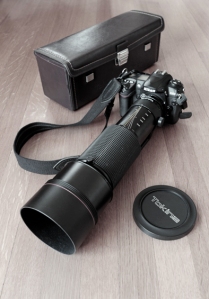
Tokina 150-500mm zoom lens / Terry Long
Even though I am a photographer, it is not often that I buy new equipment, tending to use the same camera, or set of lenses for as long as possible. It takes time to get to know and operate each piece of equipment, so that there is no fumbling around with buttons, switches, and levers when your in a rushed situation, trying to catch that fleeting moment that is never to be seen again. I have met many photographers, usually older ones, who will tell you stories about the one that got away! I have one of those stories, and it was the Queen of England who got away, without me capturing the precise moment. I had a telephoto lens on my camera that was far too powerful, so I could not focus on her Royal Majesty. Somewhere in my photo files there is a very blurred 6 x 6 cm colour Ektachrome transparency of the Oueen waving her hand at me. From that day on I have tended to use the standard kind of lenses for all of my work, until last week, when I purchased a used Tokina 150 – 500 mm lens. The lens was made in the 1990s, and is pre-digital, but works just fine on my Nikon D700. You have to manually focus, and zoom the lens, which is a slightly slow one hand procedure, but unless your photographing the Queen driving her Rolls Royce at ninety miles an hour, this lense works perfectly well, and at $200, or about 125 of her Majesties pounds, is a terrific deal! About 1000 of these lenses were sold in the USA, and some of those were made with Pentax and Canon mounts, which would make this lens a bit rare. Following, are a few test shots taken on this lens, which I hope to use for my digital masters project.

The moon taken at 500mm, 60sec, f8 / 2013 / Terry Long
Orbitals of light around the moon / 2013 / Terry Long
The moon was taken with the Tokina zoom lense set at 500mm, f8 aperture, and 60 second shutter speed. The drawing and painting with light was created with a swinging LED light, coloured, and starburst filters. There were a total of 16 digital layers to create the end effect.

San Bernardino Mountains / 400mm,f8,125sec / 2013 / Terry Long
This photo is part of the view from my front garden, and was taken handheld, which would not have been my normal choice , but I did not have time to grab my tripod, because the light was changing fast. The Tokina 150 – 500 mm zoom lense is heavy, and needs to be mounted on a sturdy tripod for low light situations such as this. The tripod I use for this lense is the Manfrotto with a pan and tilt head, as seen in the photo below.

Tokina 150 – 500mm lense, Nikon D700, Manfrotto tripod / 2013 / Terry Long
Head of a Minotaur

Head of a Minotaur / Bronze / 2013 / Terry Long
I really like trying out different art mediums, and although I had used the technique of silver casting many years ago, I had never tried bronze casting until this month, when I joined a local 7 day workshop run by a friend of mine. Bronze casting has been around for about 4,000 years, and it may have been the early potters who developed the technique. I used the lost wax method to create my minotaur head above, by first modeling the head in wax, and then making a mold of it with plaster and sand. Next, the wax is removed, and the molten bronze poured the into the mold. Once the piece is cool enough to handle, the mold is removed, and with a bit of luck you have a bronze copy of your original, which will need much cleaning up. There is a fair bit more to the process than what I have described, but you can find the details about this ancient method, and other casting methods at this link…
http://www.modernsculpture.com/bronze.htm
After I had cleaned up the bronze minotaur head, I decided to use it for my U of A L digital masters art project, by painting it with light. After setting up the head in my studio on a plain background, I circled the head several times with a single LED hand held light, so as to highlight all the facets, while making a 20 second exposure on my tripod mounted Nikon D700. I then used Photoshop to help me get the effect I was looking for, trying to avoid any formulas I had used before. I would call the process a kind of digital alchemy, where you are trying to create something artistically precious and meaningful.
Head of a Minotaur / Bronze / 2013 / Terry Long
Close up of Minotaur Head
Inspiration

Next Chapter / 2013 / Terry Long
You never know where and when inspiration will come to you, and in what form. Just be aware, ready and receptive, at least that’s what I try to do. Last weekend my wife travelled to a wedding in North Carolina, while I travelled to Arizona for a memorial service for a dearly departed friend. Yesterday my wife and I attended a local funeral for another dear friend. At the funeral there was a young couple with a baby boy, who announced his presents to all during the proceedings. Both the wedding, funeral and baby inspired me to create the image above, that I have titled New Chapter. For the majority of us, birth, marriage, and death can be the most important events in our lives. We chart our way through life, writing our own stories, with new chapters being added along the way. The image comprises of 21 digital layers. The background photo of the sky, which I took on my Canon S95, was not big enough, and had to be extended by painting extra sky with photoshop. The 16th century book was on display in a local museum, where I photographed it with the available light. I removed the text on the right side of the page , so I could add my mandala design. I repeated the design across the lower section of both pages, allowing it spill out slightly. The design is also repeated in the sky. The image below is a section of the mandala design which I painted with two LED lights, recording the movements on a tripod mounted Nikon D700 DSLR (digital single lens reflex), 15 seconds exposure at f22. If you are looking for inspiration, you may want to check out this link with 100 inspirational quotes…
http://www.forbes.com/sites/kevinkruse/2013/05/28/inspirational-quotes/
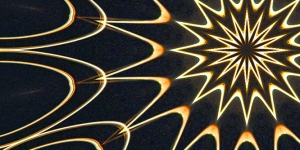
Next Chapter (section) / 2013 / Terry Long
Night Blue Mandala

Night Blue Mandala / 2013 / Terry Long
When I don’t have a strong concept in my head for a finished piece of artwork, I will start by playing with of my recent photos. The one’s that are still on my mind. I will take start with the whole image, or part of an image, by perhaps cropping it, changing the colours, turning it upside down, and inside out. This is a photo of a squash court at my sons school taken during the daytime, but by changing it into a negative, it now has a otherworldly and dream like feeling to it, which made it a suitable setting for the mandala below.

Night Blue Mandala / 2013 / Terry Long
The Artistic Creative Process

To be, or not to be / 2013 / Terry Long
When it comes to the artistic creative process, Shakespeare is one person who excelled. Next week I will be heading up the Californian Coast Highway to Santa Cruz, where they are having their annual Shakespeare festival on the campus of the University of Santa Cruz, amongst the beautiful redwoods, a wonderful backdrop for the outdoor theatre. In the creative process, Shakespeare left no stone unturned in depicting the full gamut of human emotion and experience. Shakespeare was both creative, introducing at least 1,500 words and phrases into the English language, and also playful, with his twists and turns of story telling. “To be, or not to be” is the ultimate question put forth by Hamlet, and is also the title of my digital piece above. Is life worth living or not? Shakespeare was passionate about life, and we see it, hear it, and feel it to the full in his plays. Another passionate artist, who was also both creative and playful was Picasso, who created the drawing of Shakespeare below.
Shakespeare / 1964 / Pablo Picasso
You can check out the Shakespeare Festival at Santa Cruz here… http://www.shakespearesantacruz.org/season/ and if want to learn more about Shakespeare, please go to this link… http://www.shakespeare-online.com/biography/wordsinvented.html plus, this is a useful link to several blogs dealing with the creative process… http://pinterest.com/ajh12345/creative-process/
The Spiritual in Art
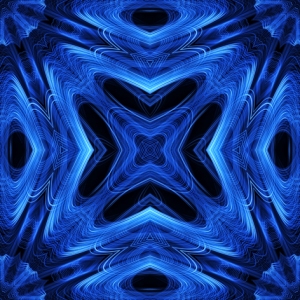
Spirit Blue Mandala No.4 / 2013 / Terry Long
If I had to align myself with a particular art movement, or art group, it would be the Spiritual Art Movement, but try finding books and relevant information on this art movement, and you would be hard pressed. Unlike the ever popular Impressionists, and the Expressionists, Cubists, Futurists, Vorticists, Dadaists, Surrealists, and many others, the Spiritual Art Movement is a lot harder to pin down, and I regard it in rather loose terms. If you put your heart and soul into your artwork, it will likely have a spiritual element within it. There is one book on this subject that I often turn to, even if it is a mixed bag of artists and information, and somewhat out of date, The Spiritual in Art : Abstract Painting 1890 -1985, by Maurice Tuchman. I think this book was out of print for a while, but I saw it recently on display at the Museum of Modern Art, Los Angeles. You can view information at the publishers website here… http://www.abbeville.com/bookpage.asp?isbn=0789200562
The Spiritual in Art : Abstract Painting 1890 – 1985
A Storm / pastel on paper / 1922 / Georgia O’Keeffe
Early No.2 / 1915 / Georgia O’Keeffe
Wassily Kandinsky’s book Concerning the Spiritual in Art is more definitive, and is a book that every art student should read and own. Georgia O’Keeffe who was part of the movement considered this book to be one of her major influences.
Concerning the Spiritual in Art, by Wassily Kandinsky
Weaving a Mandala with Light

Festival of Light / 2013 / Terry Long
To create Festival of Light, I made two LED light wands using small tree branches with several mini LED lights attached. The process of drawing and painting with light feels a bit like magic, alchemy, and weaving, when you start waving the wands around a darkened studio in front of the digital SLR camera, which I did for this piece. By using the two wands, I was able to weave the lights together to create intricate patterns. Having worked with many other art mediums where you are to trying capture the effects of light, it is most exciting to be using pure light to create with.
LED Light Wands
-
Recent Posts
Archives
Categories
Meta


